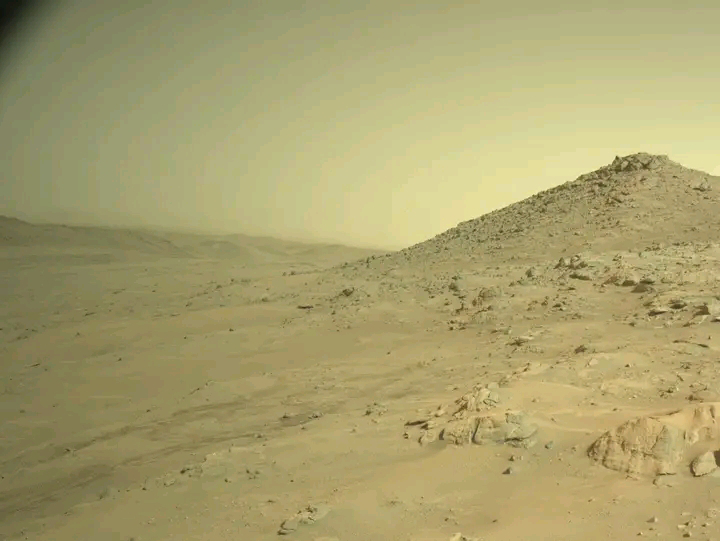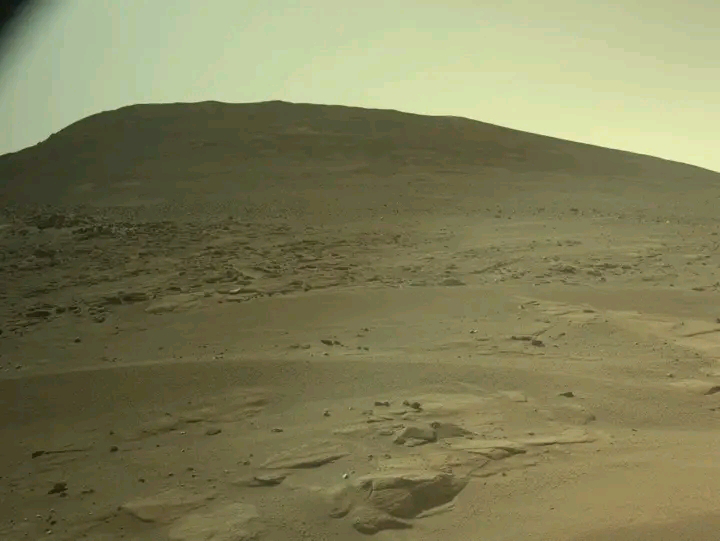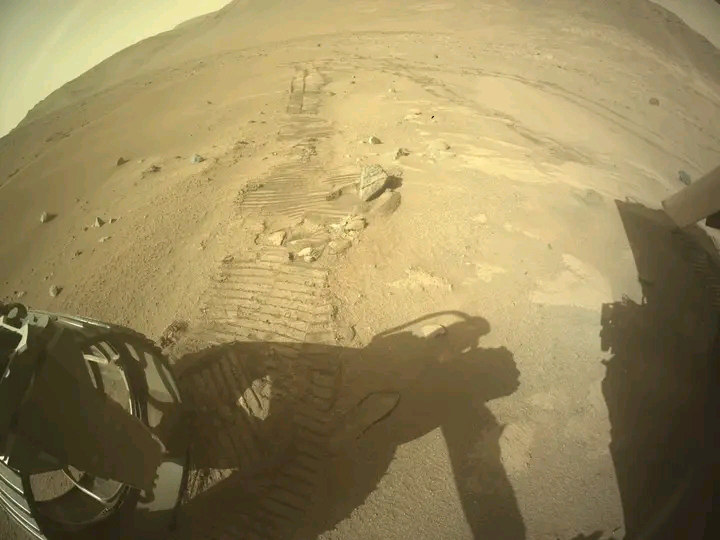Mars Perseverance Rover.Imaged: Wednesday 21st August 2024. Sol 1,245.
Mars Perseverance Rover.
Imaged: Wednesday 21st August 2024. Sol 1,245.
New images, full frame, NavCam & HazCam Cameras.
Had to drive around a dune this sol.
It has been announced that Mars Perseverance Rover is to leave Jezero Crater by going over the rim, rather than along the Neretva Vallis as originally thought.
It will involve a drive of about 1.8 KM / 1.1 miles and an elevation rise of about 330 metres / 1,000 feet to “Pico Turquino”. Then a further drive from “Pico Turquino” to “Witch Hazel Hill” will be a further 2 KM / 1.2 miles and a further elevation rise of 250 metres / 820 feet. This fifth phase of the surface mission will take several months as there will be much to investigate on route.
Orbital data from both Mars Odyssey & Mars Reconnaissance Orbiter in Areocentric (Mars centred) orbit have shown that the features named “Pico Turquino” and “Witch Hazel Hill” on the top of the Jezero Crater rim show exposed rocks from the time before the creation of Jezero Crater and that “Pico Turquino” even shows former hydrothermal activity.
Mars Perseverance Rover using the WATSON camera part of the PIXL / Planetary Instrument for X-ray Lithochemistry.
PIXL will measure the chemical composition of rocks, dust, sediments, etc using X-Ray spectroscopy, by shining a weak X-Ray beam onto the sample and measuring it's X-Ray
florescence. Different elements and molecules reflect X-Rays at very specific wavelengths depending on composition.
The PIXL instrument also contains SHERLOC / Scanning Habitable Environments with Raman & Luminescence for Organics & Chemicals using reflective properties of different minerals.
SHERLOC also contains a high resolution black and white camera for context imaging. Assisting SHERLOC is a super high resolution colour camera called WATSON, WATSON is capable of resolving particles as small as salt grains.
Nice Sir Arthur Conan-Doyle, Sherlock Holmes link there.
It was the Mars Solstice, Southern Summer, Northern Winter on: Friday 7th June 2024 . So Mars Perseverance Rover is having the shorter days and somewhat lower temperatures. MSL Curiosity conversely in Gale Crater had the longest day in the southern hemisphere as for her it was the Summer Solstice on Mars. The Sun was overhead at Midsol at the Tropic of Virgo (Mars's southern Tropic. The Tropic of Aquarius is Mars's northern Tropic).
Many of these rocks within the Neretva Vallis River channel are likely to be from other regions particularly the Syrtis Major formation out side of Jezero Crater, bought there by the long dried out Neretva Vallis river. These therefore will be of added interest.
The Neretva Vallis Delta from Perseverance and these observations are already contributing to how a martian delta formed and compare with deltas on Earth such as the Nile Delta in Egypt, Amazon Delta in Brazil, Mississippi Delta in the USA, etc, and how through weathering, extremely ancient sediments are being revealed. Formed from when Mars was warmer, wetter and more Earth like than now with a far denser atmosphere.
All ten initial sample tubes have been successfully deployed awaiting collection for return to Earth in or around 2031.
The rotation period of Mars is 24 hours, 37 minutes & 22 seconds as against 23 hours, 56 minutes & 4 seconds for the Earth. So the length of day on both planets are very similar, with Mars's about 3% longer than Earth's.
Images obtained: 14:13 - 14:33 HRS LMST.
Local Mars Standard Time at Jezero Crater.
Jezero Crater, Syrtis Major Quadrangle.
NavCam, HazCam & WATSON Cameras.
Text: Andrew R Brown.
NASA / JPL-Caltech / ASU / MSSS / LANL / CNES / IRAP. Mars Perseverance Rover.













Comments
Post a Comment